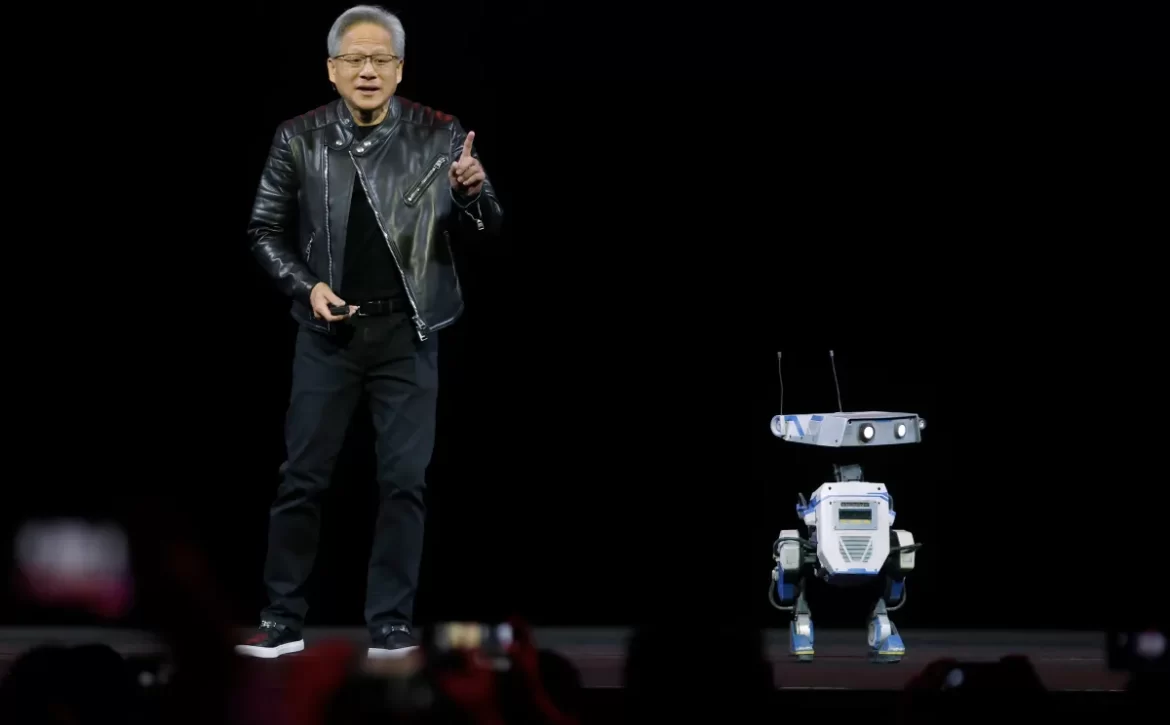Nvidia, Google & Disney Are Powering the Future of Robots — Here’s How
Nvidia, Google & Disney Are Powering the Future of Robots — Here’s How
In a tech landscape dominated by generative AI, something equally powerful is unfolding — the rapid evolution of robotics. And at the heart of it all, three industry titans — Nvidia, Google DeepMind, and Disney Research — are teaming up to redefine how machines think, move, and interact with us. At Nvidia GTC 2025, this unlikely trio revealed a vision that could reshape industries, entertainment, and everyday life. From open-source physics engines to foundational AI models, the stage is set for an AI-powered robotics revolution.
Act I: The New Brain for Robots — GR00T N1
Nvidia’s GR00T N1 is a foundational AI model for humanoid robots, much like GPT for language. It enables robots to understand, generalize, and perform a wide range of physical tasks without task-specific retraining. Inspired by biological cognition, GR00T’s architecture merges reinforcement learning, imitation learning, and large motion datasets. This allows it to adapt quickly, improve over time, and function reliably in the real world — from picking up fragile objects to navigating uneven terrain.
Act II: The Engine That Powers Realistic Movement — Newton
Simulation is vital for robotic learning, and Newton is Nvidia’s latest physics engine designed precisely for that. Created with Google DeepMind and Disney Research, it simulates real-world physics in high fidelity. It enables robots to learn in virtual environments that mimic reality — helping engineers train robots faster, safer, and more cost-effectively. Newton handles everything from rigid-body dynamics to soft-body interactions and even expressive humanoid behavior.
Act III: Disney’s Dream Comes Alive — Robots With Emotion
Disney Research showed off “Blue,” a lifelike robot actor capable of emotional expression and real-time adaptation. Built on GR00T N1 and simulated through Newton, Blue isn’t just a theme park novelty — it’s a proof-of-concept that storytelling and robotics can merge. These expressive machines are being trained to interpret human social cues, shift behaviors on the fly, and create deeply immersive experiences for guests at scale.
Act IV: Real-World Impacts — Not Just Science Fiction
This collaboration goes far beyond entertainment. In manufacturing, GR00T-trained robots can adjust workflows dynamically. In healthcare, robots could learn fine-motor skills to assist in surgery or eldercare. In logistics, they could work collaboratively with humans in warehouses. Newton’s simulations reduce the need for costly physical testing, while GR00T’s generalization allows for flexible deployment across sectors. Together, these innovations make robotics more affordable, adaptive, and intelligent.
Act V: The Nvidia Isaac GR00T Blueprint
To accelerate robotics development, Nvidia launched the Isaac GR00T Blueprint — a full-stack toolkit that generates synthetic training data and refines it through simulation. This drastically cuts development time by reducing reliance on real-world trials. Companies can now simulate millions of interactions per day, fine-tune robot behavior, and deploy smarter, safer machines in record time. This is democratizing advanced robotics for startups, universities, and hobbyists alike.
Why This Collaboration Matters
Nvidia brings GPU-powered AI and simulation, Google DeepMind contributes advanced reinforcement learning, and Disney offers human-robot interaction and storytelling. This trio unites hardware, intelligence, and emotion — an unprecedented formula. The result? Machines that are not only autonomous but also intuitive, expressive, and purpose-driven. These robots won’t just assemble parts — they’ll make decisions, respond emotionally, and interact with people seamlessly.
Predictions: What the Next 12 Months Could Bring
1. Open-source robotics will explode with tools like GR00T and Newton available to developers.
2. Home assistants will go beyond voice — becoming physical, intelligent, and emotionally responsive.
3. Hospitality robots will become more common — greeting guests, providing directions, and creating memorable experiences.
4. Healthcare robots will advance from assistants to companions.
5. Education will adopt robotic tutors that engage students visually, emotionally, and interactively.
2. Home assistants will go beyond voice — becoming physical, intelligent, and emotionally responsive.
3. Hospitality robots will become more common — greeting guests, providing directions, and creating memorable experiences.
4. Healthcare robots will advance from assistants to companions.
5. Education will adopt robotic tutors that engage students visually, emotionally, and interactively.
Final Thoughts: The Age of Cognitive Machines
The partnership between Nvidia, Google, and Disney marks the beginning of a new era. GR00T N1 and Newton bring us closer to robots that don’t just mimic tasks — they understand, learn, adapt, and even connect emotionally. Whether it’s a factory floor or a Disney park, these robots will blend intelligence with empathy, function with storytelling, and automation with artistry. The age of cognitive, expressive machines is here — and it’s built on collaboration, open platforms, and bold imagination.

